Condensation occurs when warm, moist air contacts a cold surface. This can be a problem when it forms on the inside of your home’s walls. Fortunately, there are several ways to fix condensation on interior walls and keep your home comfortable and dry. Read on to learn more about how to fix condensation on interior walls.
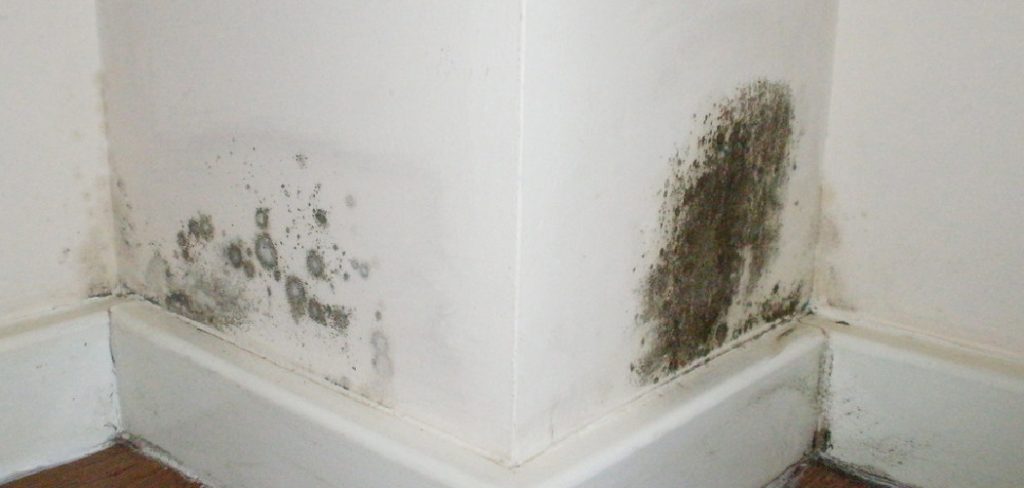
Summary:
If you are experiencing condensation on your interior walls, the first step is to identify the source. Common causes can be inadequate insulation, low air circulation, and high humidity. To begin fixing your condensation problem, you should insulate the affected area with an insulation material such as foam or cellulose.
You can also increase ventilation in the space by installing vents and fans that draw out moist air and replace it with drier air from outside. Finally, if necessary, consider purchasing a dehumidifier to help reduce humidity levels within your home.
What Is a Condensation on Interior Walls?
If you have noticed small water droplets on your interior walls, you may have been experiencing condensation. This occurs when warm air inside your home comes into contact with a cold surface, such as a window or exterior wall. As the warm air cools, it reaches the dew point; water vapor turns into liquid water.
While condensation is not necessarily harmful, it can lead to larger problems such as mold growth if it is not addressed. Fortunately, you can do a few things to prevent condensation on your walls, such as increasing ventilation and using a dehumidifier. By taking these steps, you can help keep your home free of unwanted moisture.
Why It’s Important to Fix Condensation on Interior Walls?
Left unchecked, condensation on your home’s walls can cause several problems. The moisture can lead to the growth of mold and mildew, which can damage the structure of your home and create health hazards. In addition, the water can cause paint to peel and wallpaper to deteriorate. If you have noticed condensation on the walls of your home, it is important to take action to remove it.
How to Fix Condensation on Interior Walls in 5 Easy Ways
If you’ve noticed condensation on your interior walls, it’s important to take action to fix the problem. If left unchecked, condensation can lead to serious moisture damage in your home. Luckily, you can do a few simple things to get rid of condensation and keep your walls looking dry and healthy.
1. Improve the Ventilation
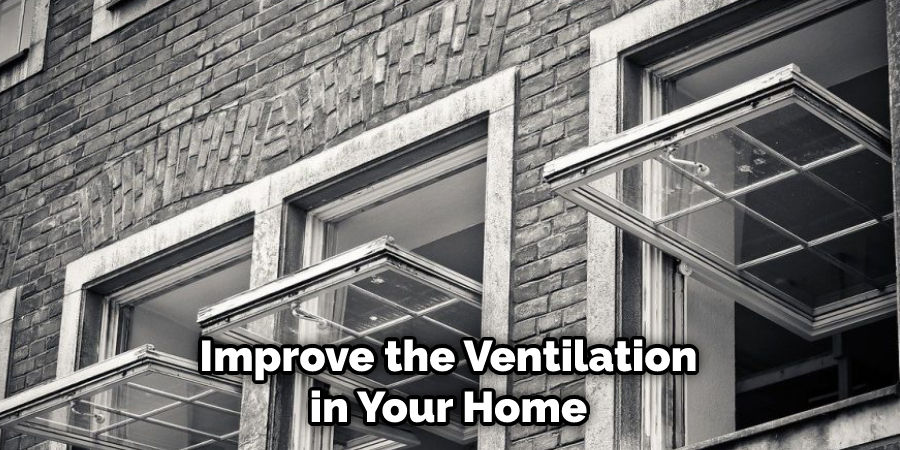
One of the best ways to reduce condensation on your walls is to improve the ventilation in your home. If your home isn’t well-ventilated, air can become trapped and lead to condensation. Make sure to open windows and doors regularly to let fresh air circulate. You may also want to consider installing a ventilation fan in your bathroom and kitchen to help reduce trapped moisture.
2. Reduce the Humidity
Another way to reduce condensation on your walls is to lower the humidity in your home. This can be done using a dehumidifier or simply opening windows and doors more often. You may also want to avoid using humidifiers, which can increase the air’s moisture and lead to condensation.
3. Insulate Your Home
Insulating your home can also help reduce condensation on your walls. This is because insulation helps to keep warm air from escaping and cold air from entering, which can help to stabilize the temperature inside your home. This can be a great way to reduce condensation in homes that are prone to drafts.
4. Use a Heater
If you have a severe condensation problem, you may want to consider using a heater. This can help raise your home’s temperature and reduce the amount of moisture in the air. Just be sure to use a safe and reliable heater that is appropriate for the size of your home.
5. Repair Leaks
If you have any leaks in your home, it’s important to repair them as soon as possible. Leaks can allow moisture to enter your walls and lead to condensation. Make sure to check for leaks around windows, doors, and pipes and repair them promptly to prevent condensation.
That’s it! You’ve now learned how to fix condensation on interior walls. By taking these simple steps, you can help keep your home free of moisture and prevent serious damage.
What Are Some Effective Ways to Reduce Humidity in Your Home?
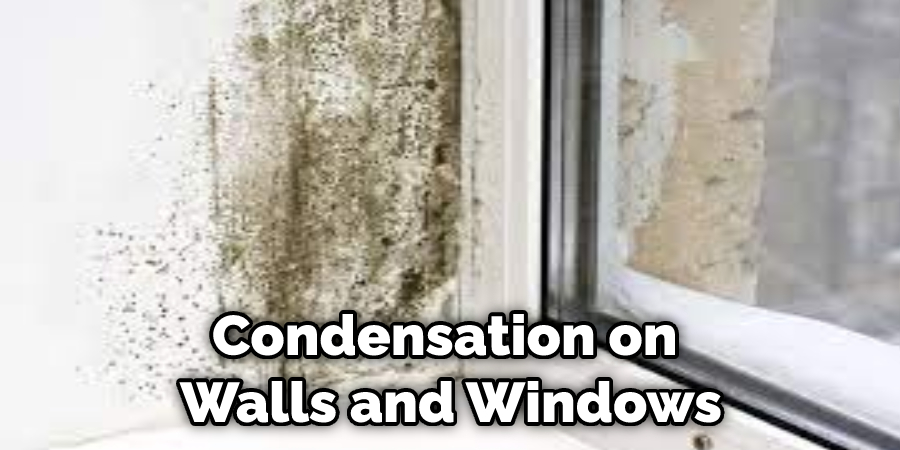
High humidity levels can be uncomfortable and can cause a variety of problems in your home, such as musty odors, condensation on walls and windows, and even mold growth. Thankfully, there are a few simple things you can do to reduce the humidity in your home and create a more comfortable living environment.
One of the easiest ways to reduce humidity is to use a dehumidifier. Dehumidifiers work by pulling moisture out of the air, and they can be very effective at reducing the humidity level in a room. Another way to reduce humidity is to ventilate your home. Open windows and doors to allow fresh air to circulate, and consider installing an exhaust fan in areas where humidity is a problem.
Finally, make sure you are not adding additional moisture to the air. For example, avoid hanging wet clothes indoors, and keep bathroom doors closed when showers are in use. By following these simple tips, you can reduce the humidity in your home.
How Can I Keep My Interior Walls from Getting Damaged by Condensation?
The best way to keep your interior walls from getting damaged by condensation is to control the humidity in your home. During the winter months, warmer air can hold more moisture, so it’s important to use a humidifier to maintain a relative humidity of 30-50%.
You should also make sure that there’s plenty of ventilation in your home, especially in high-moisture areas like the kitchen and bathroom. If you have a forced-air heating system, be sure to change the filters regularly to prevent excess moisture from building up.
By taking these precautions, you can help to prevent condensation and keep your walls looking new.
The Top 5 Causes of Condensation on Interior Walls
Condensation on interior walls is a common problem, particularly in cold weather. There are many reasons why condensation can occur, but the most common causes are listed below.
1. Poor Insulation
If your home is poorly insulated, warm air can escape from the interior, causing moisture to condense on the walls. This is especially common in older homes with single-pane windows.
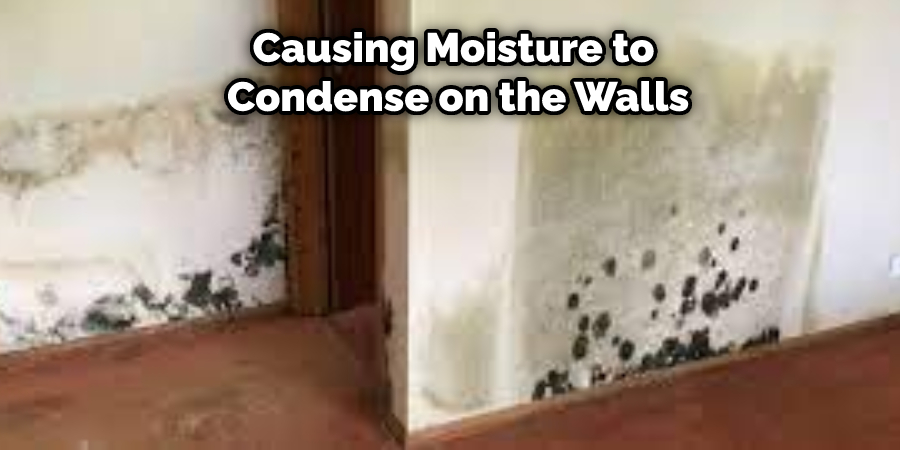
2. High Humidity
If the air inside your home is very moist, it can lead to condensation on the walls. This can be caused by cooking, washing, and even showering.
3. Drafts
If there are drafts in your home, they can cause cold spots on the walls where moisture can Condense. This is often caused by gaps around doors and windows or by cracks in the walls themselves.
4. Faulty Heating
If your heating system is not working properly, it can cause the air inside your home to become too dry, leading to condensation on the walls. This is a common problem in winter when central heating systems are turned up high.
5. Cold Weather
In very cold weather, interior walls can become colder than the air inside your home, causing moisture to condense on them. This is often made worse by poor insulation or drafts.
If you’re noticing condensation on your walls, it’s important to try and identify the cause so that you can take steps to fix it. Otherwise, the problem is likely to persist and could even lead to mold growth.
What Are Some Tips to Prevent Condensation on Interior Walls?
If you live in a humid climate, you may be all too familiar with the problem of condensation on your walls. This moisture can lead to mold and mildew growth, causing structural damage and creating an unhealthy indoor environment. Luckily, you can take a few simple steps to prevent condensation from forming on your walls.
One of the most important things you can do is control the humidity levels in your home. This can be accomplished by using a dehumidifier, opening windows on dry days, and using exhaust fans when cooking or showering. You should also ensure that your walls are well-insulated, as this will help regulate the temperature and prevent cold surfaces from coming into contact with warm air.
By following these tips, you can keep your walls dry and free of condensation.
Tips for Keeping Your Home Warm in Winter and Preventing Condensation
Winter weather can be rough on your home. From drafty windows to cold floors, keeping your house warm and comfortable can be hard. And if you’re not careful, the cold and moisture can also lead to condensation and mold. But there are a few things you can do to winter-proof your home and keep it cozy all season long.
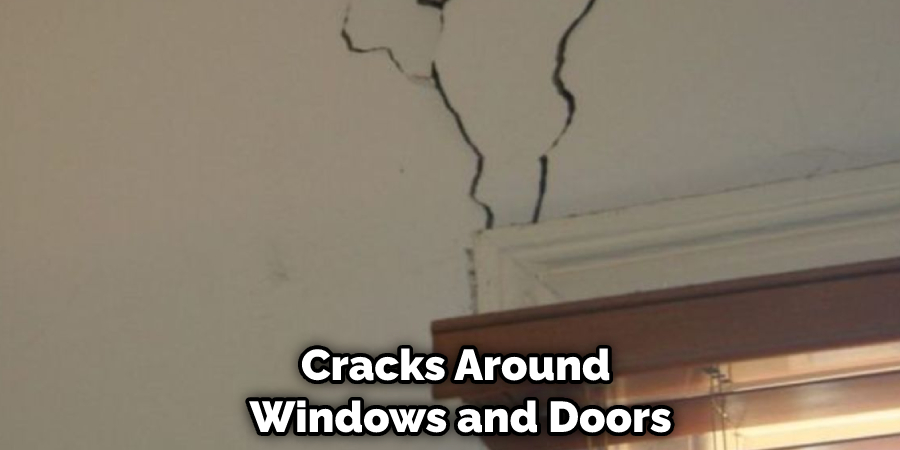
Start by sealing up any gaps or cracks around windows and doors. Then, add some extra insulation to your attic and walls. You can also install weather stripping around doors and windows and make sure your furnace filters are clean. Finally, keep an eye on indoor humidity levels, and open up the towel dryer when you’re done with laundry.
Just a few simple steps can make a big difference in keeping your home warm, dry, and comfortable all winter long. Keep reading for more information about how to fix condensation on interior walls.
Is It Necessary to Paint Over Condensation Stains?
Condensation stains are a common problem in homes, especially in rooms with high humidity levels. The stains are caused by water droplets that form on cold surfaces, such as windows and metal fixtures. While the stains can be unsightly, they are not usually harmful to the surface material. In most cases, the stains will disappear within a few days.
However, some people choose to paint over the stains to reduce their visibility. Painting over condensation stains is not necessary and can actually cause more harm than good. The paint will not adhere properly to the wet surface, and it will eventually peel off.
Furthermore, painting over the stains will trap moisture beneath the paint, which can lead to mildew growth. In general, it is best to wait for the condensation stains to disappear simply.
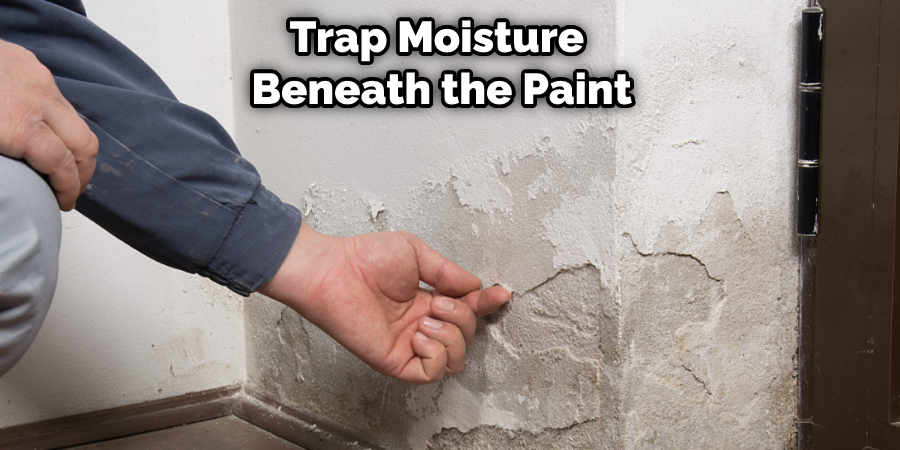
Can I Use a Dehumidifier to Fix Condensation on Interior Walls?
The warmer months bring increased humidity, leading to condensation on your walls. This is especially common in rooms with high humidity, such as kitchens and bathrooms. While this condensation can be frustrating, there are a few things you can do to prevent it.
One way to reduce condensation is to use a dehumidifier. Dehumidifiers work by removing moisture from the air, which can help to reduce the amount of condensation on your walls. Additionally, you can also try to increase air circulation in your home by opening windows and using fans.
By taking these steps, you can help to keep your walls free of condensation.
What Are Some Solutions for Curing Indoor Moisture Problems?
Any home can suffer from indoor moisture problems. These problems can lead to the growth of mold and mildew, which can cause serious health problems. Several things can cause indoor moisture problems, including leaks in the roof or foundation, condensation from cooking or showering, or even simply high humidity levels.
Whatever the cause, it is important to address the problem immediately. Some solutions for curing indoor moisture problems include running a dehumidifier, using fans to circulate air, fixing leaks, and increasing ventilation. By taking these steps, you can quickly get rid of indoor moisture problems and create a healthier living environment.
How Do I Prevent My Home From Getting Too Humid in The Winter?
In the winter, the air outside is generally much drier than the air inside your home. This can lead to a build-up of humidity, which can, in turn, cause several problems. Excess humidity can encourage the growth of mold and mildew, both of which can damage your walls and furniture.
It can also make your home feel stuffy and uncomfortable. However, you can do a few things to help prevent your home from getting too humid in the winter. Firstly, make sure that you have proper ventilation. This will allow any moist air to escape and help keep the humidity levels under control.
Secondly, invest in a dehumidifier. This will help to remove any excess moisture from the air, making your home more comfortable and preventing the growth of mold and mildew. Finally, try to keep your house as cool as possible. Warmer air holds more moisture, so keeping your home cooler can help reduce the amount of humidity in the air.
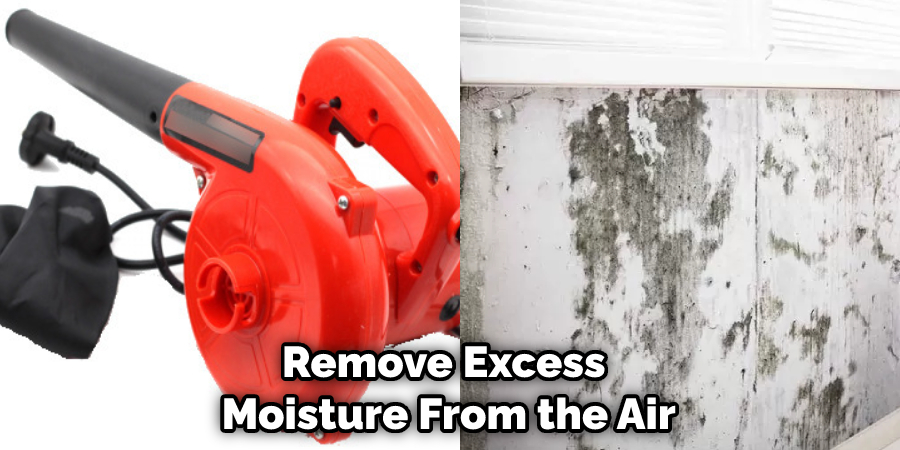
By following these simple tips, you can help to keep your home comfortable and free from the problems associated with excess humidity.
Frequently Asked Questions
Will a Dehumidifier Stop Condensation on Walls?
A dehumidifier might be able to stop condensation on walls, but it is not guaranteed. Condensation occurs when moisture (water) collects on a surface and then evaporates. When the humidity level in the environment drops below 50%, water droplets will form and freeze onto surfaces like windows, insulation, furniture… you get the picture.
If your dehumidifier can reduce the ambient humidity levels by 30-50%, it may help to prevent or reduce condensation on walls. However, if the room is chronically dry due to periodic flooding or high indoor relative humidity, a dehumidifier will not be effective at stopping condensation from occurring on walls.
Will Heat a Room Stop Condensation?
The climate in which you live will affect how quickly and effectively heat a room will stop condensation. However, general guidelines suggest that if temperatures are below 55°F (13°C), heating it up to 68°F (20°C) should be sufficient to eliminate water droplets from the air. Above 68°F (~20°C), further warming may become necessary.
Why Are My Walls Wet in the Winter?
If you have water seeping from the walls of your home in the winter, it may be due to condensation. Condensation occurs when moisture collects on surfaces such as windows and doors, eventually turning into liquid form. When this happens inside a building, water vapor moves through the air and enters small spaces like cracks in foundations or pipes. This causes wetness near these areas which then leads to wall leaks.
To prevent this problem from happening, make sure that all exterior doors are closed tightly at night and keep any drafts out by installing storm windows and installing vapor barriers along Windows and other openings where moisture can accumulate (like under eaves).
What Does Condensation on Walls Look Like?
Condensation on walls can appear as a thin film of water that has condensed from the humidity in the air. This is especially common in warm and humid environments, such as bedrooms or kitchens. It can also occur when there is an obstruction in the path of moisture ventilation, like a closed window.
When condensation forms on surfaces, it will cause them to become wet and muddy. This makes wall assemblies less stable and may lead to cracking or distortion over time due to weight loading or wind stress. In severe cases, corrosion of metal components might even begin occurring.
If you notice unusual symptoms related to your home’s condensation problem, like peeling paint or water damage inside your house, be sure to call an experienced contractor for an inspection and repair consultation.
Conclusion
If you have tried all of the above and your condensation problem persists, it might be time to call a professional. A contractor will be able to help you identify the source of the moisture and make necessary repairs. Thanks for reading our post about how to fix condensation on interior walls.
